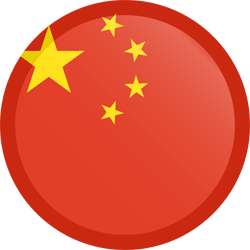- cross-posted to:
- globalnews@lemmy.zip
- finance@beehaw.org
- cross-posted to:
- globalnews@lemmy.zip
- finance@beehaw.org
cross-posted from: https://beehaw.org/post/17939276
“China’s economy has rebounded and is on an upward trajectory, with its GDP for the year expected to pass the 130 trillion yuan mark,” Xi Jinping said in his 2025 New Year message.
On December 26, China revised upward its gross domestic product figure for 2023 by 3.4 trillion yuan, a 2.7% adjustment. That puts the size of the Chinese economy that year at 129.4 trillion yuan or $17.73 trillion. Xi’s target for the size of the economy, therefore, is easy to reach.
There is, as usual, great optimism displayed by Beijing leaders about the size of the Chinese economy. Few of the official numbers make sense, however, as reported figures are hard to reconcile with, among other things, large cash outflows from the country.
For instance, China experienced the largest outflow from its financial markets in November, as Chinese banks wired $45.7 billion offshore. The amount, announced by the State Administration of Foreign Exchange, includes repatriation of foreign investment in China and Chinese residents’ purchases of offshore securities.
[…] The Wall Street Journal in late October reported that, based on its calculations, “as much as $254 billion might have left China illicitly in the four quarters through the end of June.”
[…]
There is […] long-standing pessimism about the Chinese economy. Everyone seems worried about, for instance, a debt crisis. There is, of course, much to fear, in part because no one really knows how much indebtedness China is carrying. Everyone can sense that the total-country-debt-to-GDP ratio is dangerously high, however. After taking into account the so-called “hidden debt” and adjusting for inflated GDP reports, the ratio could be, according to my estimate, 350%. A higher estimate—say, 400%—is also possible.
[…]
So far, the Communist Party—both during Hu Jintao’s and Xi Jinping’s rule—has not exhibited the political will necessary to enforce painful solutions. Its continual failure to resolve the debt situation has meant the government has had no option but to resort to short-term and superficial measures, such as more debt-fueled stimulus.
[…]
Evasion of currency controls [which is what Beijing is practicing] is getting harder, but it is occurring nonetheless as people do not believe what Xi and his officials say about the economy. “Weakness in the yuan and local stocks, as well as the nation’s wide interest-rate gap with the U.S., are raising the risk of a vicious cycle of capital outflows,” Bloomberg notes. The plunge in property prices—property accounts for about 70% of the wealth of the Chinese middle class—a sputtering economy, and a deep concern over Xi Jinping’s neo-Maoist policies all contribute to gloom.
“It’s a grim situation for Chinese people,” says Anne Stevenson-Yang, author of Wild Ride: A Short History of the Opening and Closing of the Chinese Economy. The pessimism is encapsulated in the phrase “Doom Loop” economy. Many now say China has a “garbage economy.”
[…]
“A financial or political crisis still is possible if China’s huge debt overwhelms the banking system or if unemployment reaches such high levels that protests erupt nationally causing a major change in government policy,” [another expert adds].
[…]
China has the means to solve its problems, but Xi Jinping is determined to pursue 1950s-type solutions that only aggravate the situation. Money, therefore, will continue to flow out.


